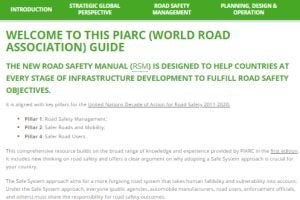
Overview
City Limits (NACTO document) ⌵︎
In 2018, NACTO convened a working group of major US cities to develop new robust guidance for setting speed limits on urban streets that could provide an alternative to the highway-focused federal recommendations. Over the course of the following 18 months, transportation staff from 19 cities helped to write and review the guidance and provided technical expertise based on their experience developing speed management strategies and programs and implementing lower speed limits in their own cities.
The resulting guidance, City Limits, provides cities with clear technical and policy guidance on setting safe speed limits on city streets. All of NACTO’s Member Agencies (81 members at the time of final review) have approved this guidance. The technical guidance and recommended maximum speed limits in this document are based on input from NACTO member agencies, academic studies about speeds that minimize conflict and risk, and best practices in cities across the world.
Unlike existing national guidance, City Limits focuses on urban streets, which pose the most challenging scenarios for determining speed limits and are where the majority of pedestrian and cyclist fatalities occur. In this document, urban streets refer to most of the categories of streets found in North American cities, including local, primarily residential streets, mixed use corridors, transit corridors, high density downtown streets, and urban arterials with commercial, residential, or retail uses along one or both sides. This guidance is also applicable on streets like these in non-urban areas. This guidance is not applicable on limited access streets, even within cities, or on rural or very low density streets with limited multimodal use.
Finally, the speed limit setting guidance contained in City Limits is only one piece of a larger, essential discussion around how to make streets truly safe for everyone. Speeding vehicles pose a significant, specific, and deadly threat, but comprehensive safety on city streets and public spaces involves a more holistic consideration of risks—from accessibility to gender identity-based harassment to racial violence. In particular, speed enforcement as currently practiced poses additional, disproportionate health and safety risks especially to Black and Latinx people. Manual police enforcement is a less effective way to manage speeds down over time than street design and engineering changes, and can create dangerous physical and mental health impacts for Black, Indigenous, and people of color (BIPOC), as well as other marginalized road users. This resource touches on speed enforcement, but it is not the focus of this guidance. City Limits addresses speed limit setting policy which, paired with street design, is the best tool for reducing the health and safety risks posed by vehicular speeds.
Did you know?
82% of Road Crash Fatalities and Injuries in the economically productive age groups (15 - 64 years.)
82% of Road Crash Fatalities and Injuries in the economically productive age groups (15 - 64 years.)


